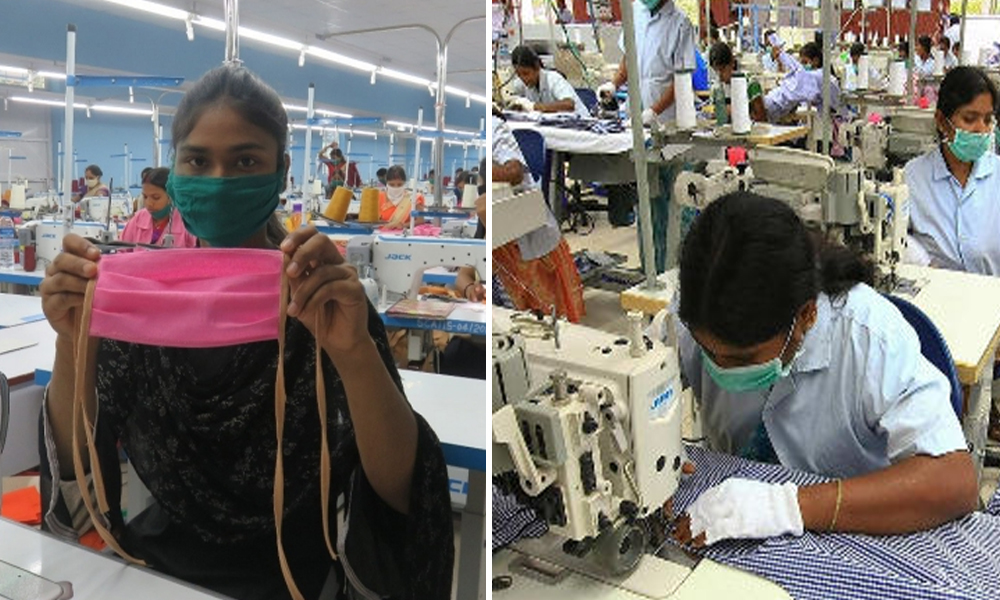
Building Resilience: Business Continuity Amid COVID-19 Pandemic
Writer: Ramanuj Mitra
Ramanuj Mitra is a Program Officer at CRB. He works on circular economy, especially in the textile and electronics sectors. He holds a Dual Degree in Mineral Engineering from IIT Dhanbad and MS in Sustainability from Arizona State University. He has worked on projects in various domains such as quality of life (urban), rural livelihoods and education, GHG emissions inventorying, and Material flow in industrial value chains.
India, 21 May 2020 3:20 PM GMT | Updated 4 Jun 2020 5:52 AM GMT
Creatives : Abhishek M |
" An engineer by profession, Abhishek is the creative producer of the team, graphic designing is his passion and travelling his get away. In more ways than one, he makes the content visually appealing."
Guest Author : Ramanuj Mitra
Ramanuj Mitra is a Program Officer at CRB. He works on circular economy, especially in the textile and electronics sectors. He holds a Dual Degree in Mineral Engineering from IIT Dhanbad and MS in Sustainability from Arizona State University. He has worked on projects in various domains such as quality of life (urban), rural livelihoods and education, GHG emissions inventorying, and Material flow in industrial value chains.
The three-week long lockdown, targeted to end on April 14 (now extended to May 31), has shut down factories; in some cases, it has even led to forced migration of labourers who were stranded without money, shelter and food.
The manufacturing sector, especially the ones dealing in non-essential goods like apparel, personal automobiles, other consumer durables has been hit hard by the ongoing pandemic.
The three-week long lockdown, targeted to end on April 14 (now extended to May 31), has shut down factories; in some cases, it has even led to forced migration of labourers who were stranded without money, shelter and food.
The apparel sector has been hit hardest, as the impact can be felt across all segments of its value chain. Brands and retailers are worried about reduced footfalls, and are putting orders on hold, or cancelling them entirely—with the exception of orders that are in various stages of production with the apparel manufacturers.
Suppliers, especially the MSME players, are worried about the post-lockdown scenario, where shortage of credit or cancelled orders can force them to shut shop completely.
Fabric procurement, which accounts for about 60% of all costs for suppliers, is very low on priority now, which will impact spinners, weavers and dyers.
Further upstream in the value chain are the cotton farmers, who had already been grappling with low prices and uneven rainfall; the current pandemic would lead to stockpiling of cotton, and the prices would crash. Ultimately, this would aggravate rural distress.
Following are some of the current and (potential) post-COVID issues:
Availability Of Labour
All units that didn't have provisions for worker housing, or were unable to retain workers by paying wages, will probably face labour shortage in the short to medium term.
Surat had faced a similar crisis (albeit a local one) about a decade ago, where a plague-like situation had halted all activities, and migrant labour was forced to flee, amidst widespread discrimination from people from neighbouring cities and districts.
Experience from Surat suggest that migrant labourers will take a while to return once the lockdown ends; normalcy in activities will be elusive for the next few months at the very least. Contrastingly, manufacturers that had retained their workers by providing housing, wages, and/or temporary arrangements would be able to resume operations sooner.
Uncertainty In Demand
Domestic consumption of new apparel and other wearables are at a standstill. With uncertainty looming over resumption of commerce, buyers/brands are sceptical about placing new orders—this trend is likely to continue over a period of 3 months at the least.
Even with partial lifting of lockdown, apparel is likely to rank low on consumer priorities.
Reports suggest that millions of MSME units, small stores, etc. are facing the danger of permanent closure. According to stakeholders in the sector, apparel manufacturers will see a reduction of about 50% in orders in the coming months, even after resumption of trade and commerce.
Lack Of Support On Loans And Other Liabilities
The government has not offered to freeze all financial liabilities for a short duration; the moratorium offered on loans do not translate into any relief as the banks have declared that interest would be charged throughout the moratorium period.
Individuals and enterprises that have availed loans now face a double whammy of honouring debts as well as paying wages, with virtually zero income. Such outflow of cash will lead to diminishing of resilience for the times ahead, further reducing the confidence of entrepreneurs to invest.
Clothing Manufacturers Association of India (CMAI) has predicted that over 1 crore jobs could be lost from the textile and allied industries alone, without government intervention in ensuring cash flow.
Lack Of Access To Benefits
Given that India's workforce is largely informal, many of them lack access to the banking system. Direct Benefits Transfers would only reach the people who have Aadhar linked bank accounts.
This, combined with the fact that benefits were announced a few days later than the lockdown, many daily-wage labourers were left without any support or money away from their home states. By the time the relief measures were announced, many migrant workers found themselves out of jobs.
Good Practices And Relief Measures
A slew of short-term and long-term measures are required not only to fight the current pandemic, but also to safeguard against the next one; as several reports have mentioned, it is not a matter of "if" but a matter of "when" the next pandemic will arise.
As global temperatures rise and densities of population and livestock rise, previously unknown viruses will continue coming to the fore. The entire human society has to act together to plan and mitigate against such disasters, if not prevent them altogether.
Improvement In Working Conditions
Norms around hygiene, general cleanliness, working conditions, etc. should be under the scanner like never before. Practices that are being adopted by businesses, especially the food and grocery delivery companies (including but not limited to mandatory use of gloves and sanitizers, regular and frequent cleaning of premises, and ensuring minimal contact with the food/supplies) must become the norm, rather than just being temporary measures.
For the textile and apparel sector, this would translate into greater use of PPEs like gloves, masks, etc. on the factory floors, production lines, and material stores, among other things. Overall working conditions must improve; provisions for adequate worker housing must be considered.
Brands Could Consider Partial Payments
In the textile and apparel value chains, brands have the deepest pockets, and should shoulder a larger portion of the financial responsibility in their relationships with suppliers. While some brands have declared that they wouldn't abandon their suppliers during this crisis, many have outright cancelled orders.
If steps could be taken to release partial payments to the suppliers for existing orders, it could go a long way in alleviating distress along the value chain, keeping the flow of cash alive partially.
National Plan For Ensuring Business Continuity During Crises
The central government should look into creating guidelines for conducting business during crises that do not damage physical infrastructure, such as the current pandemic. All countries and many corporations have disaster mitigation plans in place, for earthquakes, floods, cyclones, etc.
These disasters have impact on physical infrastructure, which may lead to non-viability of businesses. Whereas, in case of bio-hazards, adequate research, risk assessment and precautions may help create ways to conduct business with reduced manpower and throughput, to enable some cash flow.
The current situation has provided evidence, especially in the case of production and delivery of essential goods and services, that business continuity is indeed viable if adequate measures are taken.
Businesses should then create their own specific plans, within the overall framework provided by the government (as and when).
Businesses at all levels should also look into creating emergency funds, to support wages and partial operations under unfavourable conditions. The government should also consider setting up a social security fund.
Another crucial component of such a plan would be providing consumers access to goods and services through innovative means, when physical access to brick-and-mortar commercial outlets is curtailed.
Urgent Need To Create Worker Database
India's economy is largely informal; estimates of informal workers in the country vary between 85-93 %. The informal nature of the jobs not only make them vulnerable to unethical business practices, but also render them incapable of availing benefits during times of crisis.
While formalizing such a huge workforce in a reasonable amount of time is an uphill task, but a registry of informal workers based on UID can be considered.
Zero balance accounts should be made mandatory, along with training for each worker in operating bank accounts. In this way, benefit transfers can reach the needy in a timely manner.
The Pradhan Mantri Jan Dhan Yojana had gone a long way in this direction; efforts must be renewed to bring all informal workers under the ambit of such schemes.
Remove Antiquated Regulations
Factory owners are paying electricity bills even though operations are completely shut down. This is because of a requirement to pay a fixed amount for rated loads every month; this is a system that was brought into place decades ago when supply of electricity was a challenge. This would deter businesses from applying for multiple connections.
Today, supply of electricity is no longer a problem. Therefore, billing should be done on the basis of actual usage. Costs incurred by DISCOMs in providing a connection should be recovered during installation.
A combination of the above measures, among others, would help build resilience in the Indian business ecosystem.
Also Read: SolarMamas: Unique Approach To Last-Mile Electrification In Remote Rural Areas
 All section
All section















